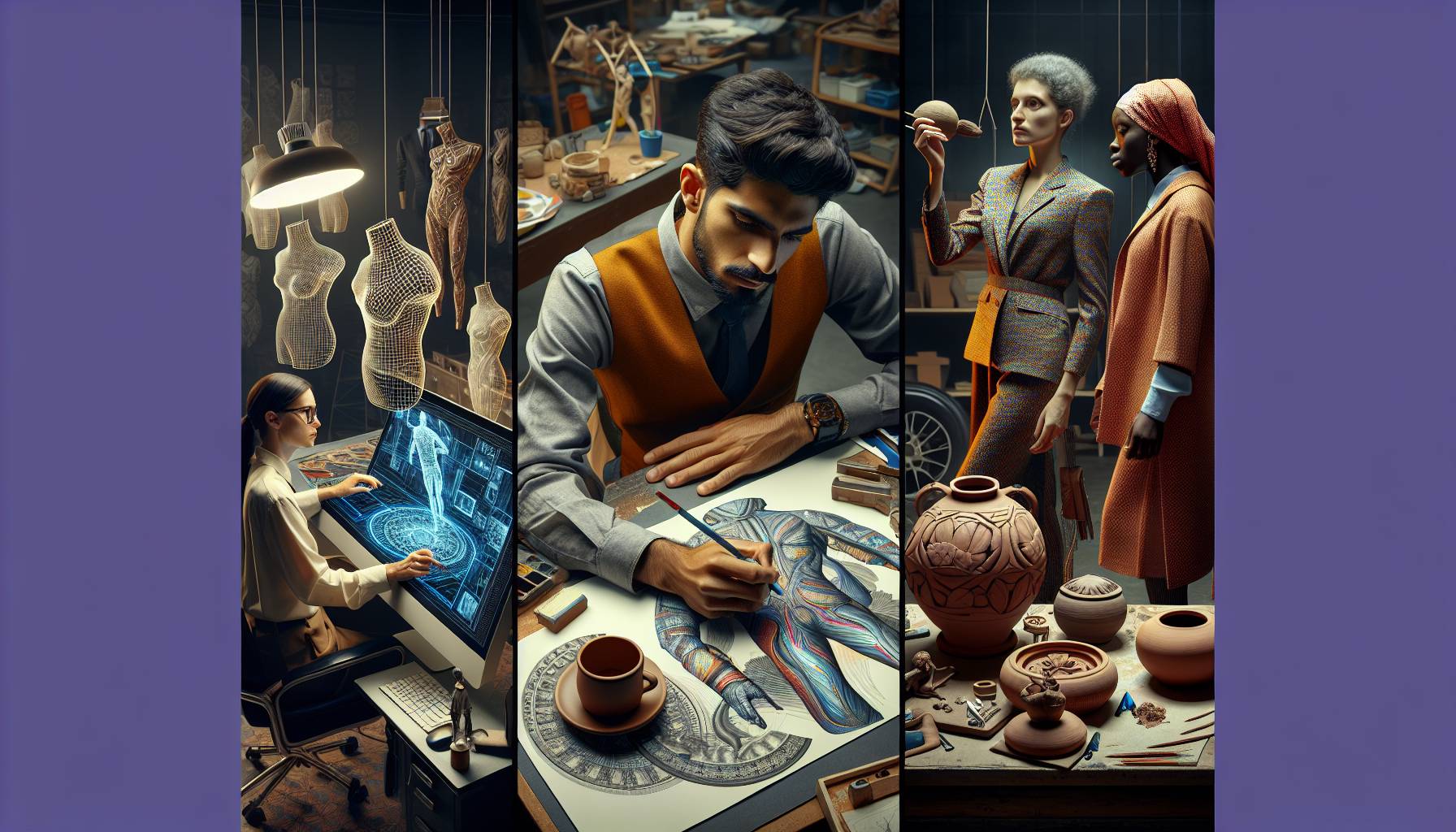Understanding limitations
In today’s digital age, the capabilities of technology are vast, yet they come with inherent limitations. Understanding these limitations is crucial for setting realistic expectations and effectively utilizing technological tools. One primary limitation is the scope of data and algorithms. While artificial intelligence and machine learning have made significant strides, they are still bound by the data they are trained on. This means that if the data is incomplete or biased, the outcomes may not be entirely accurate or fair.
Another limitation is the ethical and privacy concerns associated with technology. As systems become more advanced, they often require access to personal data, raising questions about how this information is used and protected. Users must be aware of these issues to make informed decisions about their digital interactions.
Moreover, technological tools often have constraints in terms of processing power and resource availability. This can affect the speed and efficiency of operations, particularly in high-demand scenarios. Understanding these technical limitations helps in planning and optimizing the use of technology to avoid bottlenecks and ensure smooth operations.
There is the human factor. Technology is designed to assist and enhance human capabilities, but it cannot replace human intuition, creativity, and emotional intelligence. Recognizing the boundaries of what technology can achieve allows individuals and organizations to better integrate these tools into their workflows, ensuring that they complement rather than replace human efforts.
Common scenarios
In various situations, individuals may encounter limitations when seeking assistance from technology. One common scenario is when users request specific advice or solutions that require subjective judgment or personal experience. For instance, while a digital assistant can provide general information about a topic, it may not be able to offer personalized recommendations that take into account unique personal circumstances or preferences.
Another scenario involves requests for sensitive or confidential information. Due to privacy and security protocols, technology systems are often restricted from accessing or sharing certain types of data. This is particularly relevant in sectors like healthcare or finance, where the protection of personal information is paramount. Users may find that their requests are denied or redirected to ensure compliance with legal and ethical standards.
Additionally, there are instances where users seek assistance with tasks that require a high level of creativity or emotional understanding. While technology can aid in generating ideas or analyzing data, it may fall short in areas that demand nuanced human insight, such as crafting a compelling narrative or providing empathetic support during emotional situations.
Technical limitations also play a role in common scenarios where assistance is sought. For example, users might experience delays or errors when systems are overloaded or when there is a lack of compatibility between different technological platforms. These issues can hinder the ability to receive timely and accurate assistance, highlighting the importance of having contingency plans in place.
Alternative solutions
When faced with the limitations of technology, exploring alternative solutions can be beneficial. One approach is to leverage human expertise alongside technological tools. By combining the analytical power of technology with the nuanced understanding of human professionals, more comprehensive and tailored solutions can be developed. This collaboration can be particularly effective in fields like healthcare, where technology can assist in diagnostics, but human judgment is crucial for treatment decisions.
Another alternative is to enhance the data and algorithms that technology relies on. By ensuring that data sets are diverse, comprehensive, and regularly updated, the accuracy and fairness of technological outputs can be improved. This might involve investing in data collection processes or collaborating with diverse communities to gather a wide range of perspectives and experiences.
For tasks that require creativity or emotional intelligence, fostering environments that encourage human creativity can be a valuable alternative. While technology can assist in organizing and analyzing information, creating spaces where individuals can brainstorm and innovate without technological constraints can lead to more original and emotionally resonant outcomes.
In scenarios where privacy and security are concerns, implementing robust data protection measures and transparent policies can help build trust and allow for more effective use of technology. Educating users about these measures and involving them in the decision-making process regarding their data can empower them to make informed choices and feel more secure in their interactions with technology.
Developing contingency plans and backup systems can mitigate the impact of technical limitations. By preparing for potential system failures or incompatibilities, organizations can ensure continuity and reliability in their operations. This might involve maintaining manual processes as a backup or investing in cross-platform solutions that enhance compatibility and integration.
Understanding limitations
In the ever-evolving world of fashion, it’s crucial to acknowledge the limitations that come with the territory. As a fashion expert from Australia, I understand that the industry is not just about glamour and style; it’s also about navigating the constraints that can impact creativity and innovation.
One of the primary limitations is the environmental impact of fashion production. The industry is notorious for its significant carbon footprint, and as consumers become more eco-conscious, there’s a growing demand for sustainable practices. This shift requires designers and brands to rethink their production processes, often leading to higher costs and longer timelines.
Another limitation is the rapid pace of trend cycles. With the rise of fast fashion, trends come and go at lightning speed, making it challenging for designers to keep up without compromising on quality. This pressure can stifle creativity, as there’s less time to experiment and develop unique designs.
Additionally, the fashion industry faces limitations in terms of inclusivity and diversity. While progress has been made, there’s still a long way to go in representing a broader range of body types, ethnicities, and gender identities. This lack of representation can alienate potential customers and limit the industry’s reach.
Finally, the economic constraints cannot be ignored. The cost of materials, labor, and marketing can be prohibitive, especially for emerging designers and small brands. These financial barriers can limit access to the market and stifle innovation.
Understanding these limitations is essential for anyone involved in the fashion industry. By acknowledging and addressing these challenges, we can work towards a more sustainable, inclusive, and innovative future for fashion in Australia and beyond.
Alternative solutions
In response to these challenges, the fashion industry is exploring a variety of innovative solutions to overcome its limitations. One promising approach is the adoption of sustainable materials and practices. Designers are increasingly turning to eco-friendly fabrics such as organic cotton, bamboo, and recycled polyester. These materials not only reduce environmental impact but also appeal to the growing segment of eco-conscious consumers.
Moreover, the concept of slow fashion is gaining traction as an antidote to the rapid trend cycles. By focusing on quality over quantity, brands can create timeless pieces that transcend seasonal trends. This approach encourages consumers to invest in durable, versatile garments, ultimately reducing waste and promoting a more sustainable wardrobe.
Inclusivity and diversity are also being addressed through more representative marketing and design practices. Brands are expanding their size ranges and featuring models of various ethnicities, ages, and gender identities in their campaigns. This shift not only broadens the market reach but also fosters a sense of belonging among diverse consumer groups.
Technological advancements are playing a crucial role in overcoming economic constraints. Digital fashion shows, virtual fitting rooms, and AI-driven design tools are reducing costs and increasing accessibility for both designers and consumers. These innovations allow for more efficient production processes and personalized shopping experiences, making fashion more inclusive and accessible.
By embracing these alternative solutions, the fashion industry in Australia and globally can navigate its limitations and pave the way for a more sustainable, inclusive, and innovative future. As we continue to adapt and evolve, the possibilities for positive change in fashion are endless.

